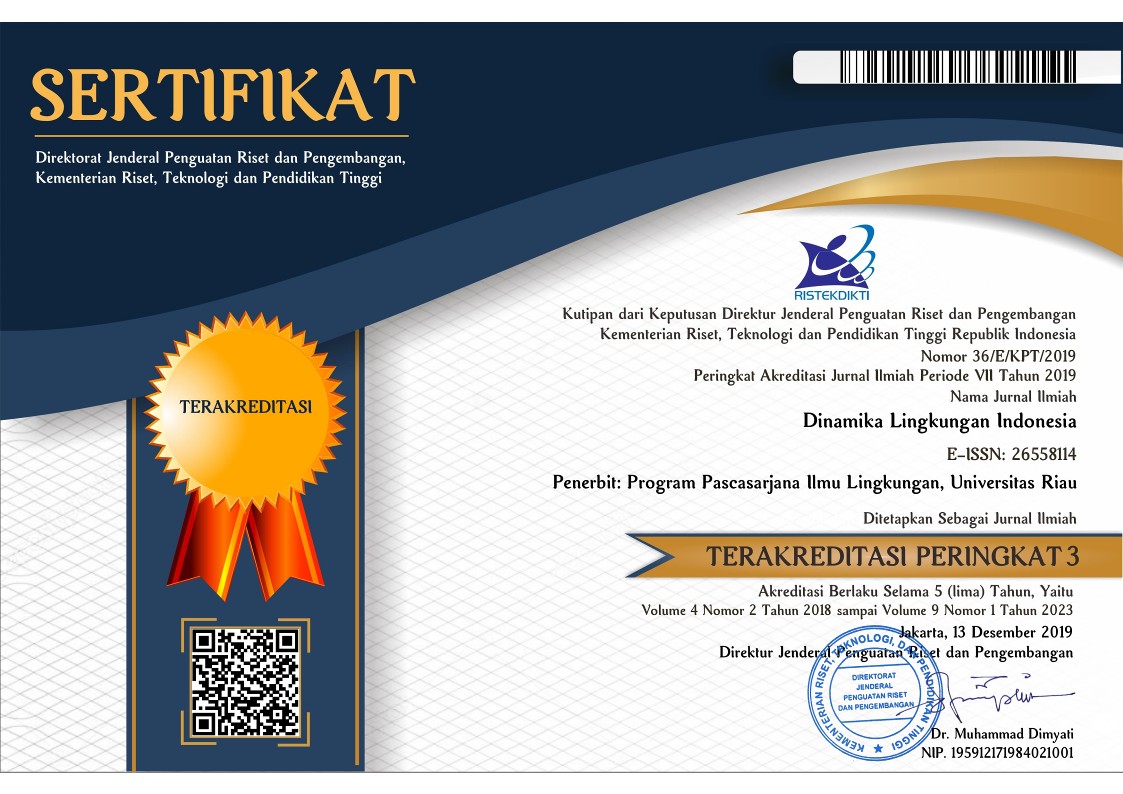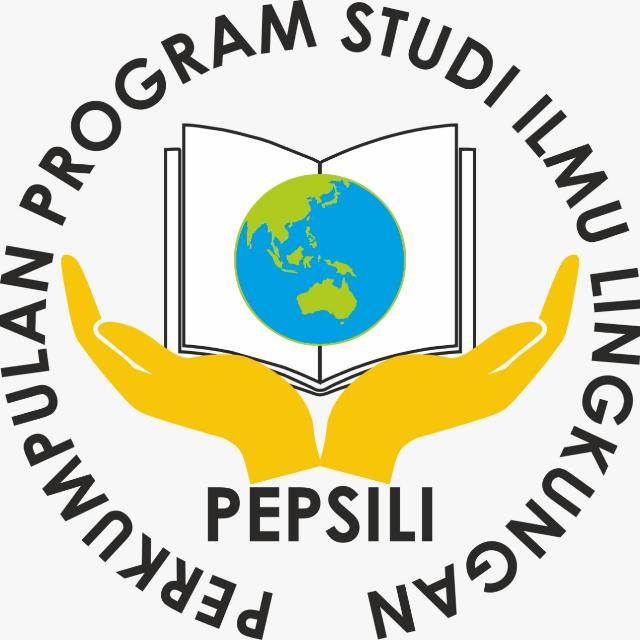Hubungan Pengetahuan, Sikap dan Intensi Perilaku Pengelolaan Sampah Berkelanjutan Pada Siswa Sekolah Dasar di Kota Padang
Abstract
This studi examined the behavioral intention of sustainable waste management inelementary school student using the framework of Theory of Planned Behavior. The objectiveof this study was to know the relationship of knowledge, attitude, and the behavioral intentionof sustainable waste management. Population and sample in this study were elementaryschool students in the Padang City, West Sumatra. The data collected for this study wereanalyzed using Structural Equation Modeling (SEM). The results of this study stated that theknowledge about sustainable waste management has a significant relationship with attitudestowards sustainable waste management. Knowledge and attitudes towards sustainable wastemanagement had a significant association with the behavioral intention of sustainable wastemanagement. These findings have important implications for the school as well as for policymakers.
Keywords
Full Text:
PDFReferences
Ajzen, I. (1991). The theory of planned behavior. Organizational Behavior and Human Decision Processes, 50, 179–211.
Apinhapath, C. (2014). Community Mapping and Theory of Planned Behavior as. Journal of Waste Management, 2014, 1–8.
Chaisamrej, R. (2006). The Integration of The Theory of Planned Behaviour, Altruism, and Self-Construal. University of Kentucky, Lexington, Kentucky.
Chan, R. Y. K., & Lau, L. B. Y. (2001). Explaining Green Purchasing Behavior : A Cross-Cultural Study on American and Chinese Consumers. Journal of International Consumer Marketing, 14, 9–40.
Cheung, S. F., Chan, D. K.-S., & Wong, Z. S.-Y. (1999). Reexamining the Theory of Planned Behavior in Understanding Wastepaper Recycling. Environment and Behavior, 31, 587–612.
Ferdinand, A. (2002). Structural Equation Modelling dalam Penelitian Manajemen. Semarang: Badan Penerbitan Universitas Diponegoro.
Hair, J. F., Black, W. C., Babin, B. J., Anderson, R. E., & Tatham, R. L. (2009). Multivariate Data Analysis. Prentice Hall.
Kline, R. B. (2011). Principles and practice of structural equation modeling. Structural Equation Modeling (Vol. 156).
Kumar, B. (2012). A Theory of Planned Behaviour Approach to Understand the Purchasing Behaviour for Environmentally Sustainable Products. Indian Instituteof Management.
McCaffery, K., Wardle, J., & Waller, J. (2003). Knowledge, attitudes, and behavioral intentions in relation to the early detection of colorectal cancer in the United Kingdom. Preventive Medicine, 36(5), 525–535.
Miller Tyler, G. (2004). Living in The Environment : Solid and Hazardous Waste (Vol 13, Ch.). Pasivic Grove, USA: Brookes/Cole Thomson.
Ramayah, T., Lee, J. W. C., & Lim, S. (2012). Sustaining the environment through recycling: An empirical study. Journal of Environmental Management, 102, 141–147.
Sankoh, F. P., Yan, X., & Tran, Q. (2013). Environmental and Health Impact of Solid Waste Disposal in Developing Cities : A Case Study of Granville Brook. Journal of Environmental Protection, 2013(July), 665–670.
Santoso, S. (2014). Konsep Dasar dan Aplikasi SEM dengan AMOS22. Jakarta: PT Elek Media Komputindo.
Selin, E. (2013). Solid waste management and health effects - A qualitative study on awareness of risks and environmentally significant behavior in Mutomo , Kenya. UMEA Universitet.
Sidique, S. F., Joshi, S. V., & Lupi, F. (2010). Factors influencing the rate of recycling: An analysis of Minnesota counties. Resources, Conservation and Recycling, 54, 242–249.
Siwakoti, S. (2009). Knowledge, Attitudes, and Practices of Women and Men towards Recycling in North St James Town, Toronto. Wellesley Institute.
World Bank. (2012). What A Waste : A Global Review of Solid Waste Management. Washington, DC.
DOI: http://dx.doi.org/10.31258/dli.2.2.p.100-107
Refbacks
- There are currently no refbacks.





